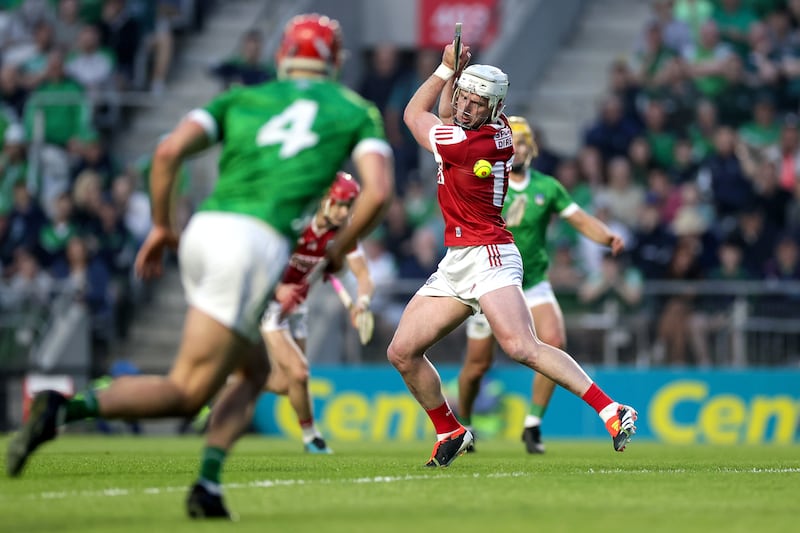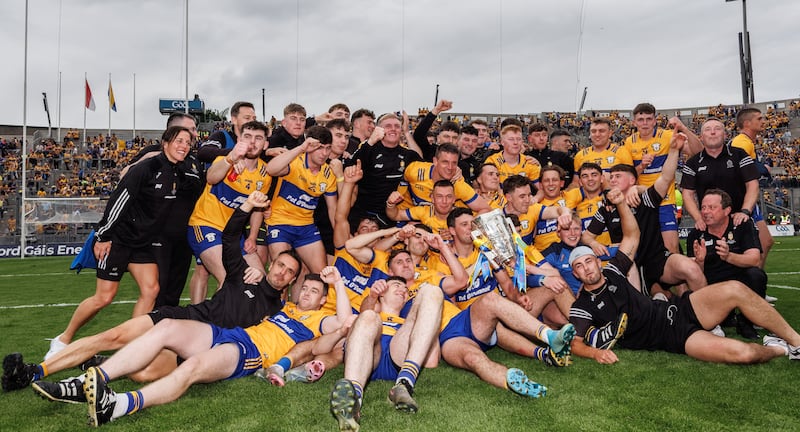The roll call of departing intercounty football managers says something about the pressure and demands of running senior county teams. This week has seen two separate managements – in Meath and Tyrone – withdraw before their term of office had concluded.
It is a precarious existence given how restricted the concept of success can be before you even get to the morale-draining atmosphere surrounding modern football. Winning silverware might be very difficult but constant recriminations about the unwatchable quality of football creates its own downbeat context.
The 2024 season saw surprises leading to a novel pairing in the All-Ireland final and unheralded winners. Armagh certainly won’t care about the ambient national mood and its view that the All-Ireland final was an example of what happens when good games go wrong.
An overwrought notion maybe, and not one that could be entirely attributed to the ills of the modern game – try Cork-Meath, 1990 – but just part of the problems football is experiencing and which have led to Jim Gavin’s committee being charged with making Gaelic football ‘more enjoyable’ for all concerned.
Inside Gaelic Games: The weekly GAA newsletter from The Irish Times
Lee Chin primed for another Wexford summer after wintering well in Australia
Darragh Ó Sé: Cork aren’t good enough to challenge Kerry and they don’t even seem angry about it
Seán Moran: Hurling championship appears to be the gift that keeps on giving, but enjoy it while you can
Meanwhile, hurling is going from strength to strength. The game may share some of the anxieties that trouble football, but it has been a glorious spectacle for the past three years, adding to its already widely acknowledged lustre and unshakeable self-belief.
Hurling also had unexpected but popular champions – Clare’s appropriation of Liam MacCarthy came after a hard old road and gave encouragement to all who keep coming close and falling short.
The All-Ireland final was simply the signing-off flourish for a championship that generated frequent superlatives – many of them showered on matches involving Cork; not that it brought much consolation to the defeated finalists.
Serendipitously, it was also hurling’s turn to be broadcast live on national BBC – the All-Ireland finals alternate the exposure – and there was much revelling in the sub-sport of finding out what the Brits had been saying about it all.

In the less rarefied broadcasting world of RTÉ, the hurling final audience broke a million, averaging 1,037,000, and pulled more viewers than the football final, 889,000, which is a comparatively rare occurrence.
The structure of the GAA championship season affects both games and the split season has brought similar issues with condensed scheduling and the mad rush of fixtures.
It is equally common to bemoan the loss of promotional opportunities for Gaelic games. August semi-finals, neatly spaced out to last the month, came with a leisurely countdown to the big day, whereas the sepia glow of September All-Irelands and their well-worn routines had become timeless.
Players lucky enough to contest a few finals have referred to the unique atmosphere of training as crepuscular sessions herald the fall of the year.
The question remains: promoting what?
There is no doubt that within the counties involved there is great excitement and anticipation but how far can that voltage travel? As a friend, from neither county, dismissively remarked a year ago, “the rest of the country to be honest is sick of Dublin and Kerry”.
Kieran Leddy, chief executive of Munster GAA, recently made an interesting point about the idea that the split season has a negative impact on the promotion of hurling. In his annual report to provincial convention, he argued that the problem is at the other end of the scale.

“The issue with hurling is at club level, where the number of clubs and adult teams in many counties remains pitifully low. The GAA’s Player Injury Fund figures show us that in 2022, there were 10 counties with fewer than 10 adult hurling teams.
“The combined number of adult hurling teams for these 10 counties was just 61. The combined population of these 10 counties is 914,000, which means that on average there is one adult hurling team per 15,000 people. By way of comparison, the ratio of adult football teams in these counties is one per 594.
“Worryingly, in 2007, these same 10 counties had a combined number of adult hurling teams registered to the Player Injury Scheme of 82, which means the combined number of adult club hurling teams has dropped by 26 per cent.
“Dropping the number of teams from a high base can be understandable given the challenges of rural depopulation etc; but dropping by 25 per cent from an already low base is a very poor reflection on the Association and the promotion of hurling.”
Commenting on this, he said: “If our old season structure was so good for promotion, why didn’t hurling flourish in that time? The number of teams in those counties has gone down. Playing hurling finals in September has clearly done nothing to arrest this decline.”
The historical inability of hurling to extend its competitive reach beyond traditional strongholds has been in contrast to football, which is played at a high level throughout all provinces.
Leddy’s figures indicate the scale of the task involved in spreading the hurling word – even of a recreational game at an organised, adult level. His remarks last January encapsulate the challenge.
“As an Association, we cannot hide from the fact that our efforts to promote the game need a serious rethink. Hurling is unique in the Irish sporting landscape in that it has achieved Unesco status, which according the Gov.ie website means it has achieved ‘international recognition as a key element of Ireland’s living heritage to be safeguarded for future generations’.
“If we fail to spread the game to all corners of our island and fail to give all children the opportunity to play the game, then neither the Irish Government nor the GAA can claim to have lived up to the aim of safeguarding the game for future generations. Simply put, we must do better.”


















